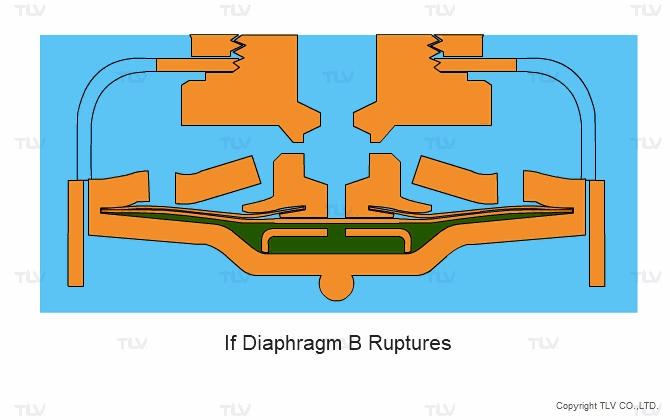- Home
- Products
- Air Vents
- Air Vents for Steam
- Overview
Fluid Control Equipment
Air Vents for Steam
LA Series
What is an X-element?
The X-element is comprised of a valve and a diaphragm that transmits the force of a thermoliquid (temperature-sensitive fluid). When surrounded by steam, the valve is closed. When condensate, air or other non-condensable gases are present, the valve is open. It can also discharge high temperature non-condensable gases, something bimetal air vents are unable to do. This is made possible due to the special properties of the thermoliquid.
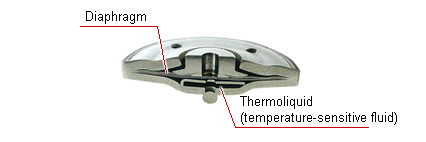
Thermoliquid, like water, is liquid when kept under a certain pressure and temperature, and expands to become a gas when its temperature rises above a certain point. The temperature at which it becomes a gas is approximately 6°C (22°C for air vents) lower than the temperature at which water becomes steam.
So when it is surrounded by steam, the thermoliquid is a gas and the chamber containing the thermoliquid expands and pushes on the diaphragm. This causes the gap between the valve and the valve opening on the diaphragm to close.
In contrast, when the area around the X-element is at a low temperature (when it is either condensate or air), the thermoliquid is in the liquid phase and the valve is not being pushed closed, so condensate and air are discharged from the gap between the valve and the valve opening.
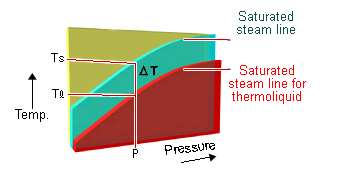
Under Normal Operation
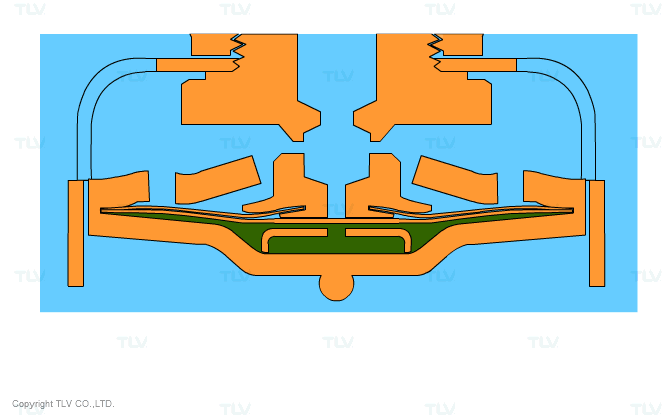
”Fail Open” Safety Feature
Fail safe features are necessary in quality precision instruments. TLV therefore designed the X-element in such a way that the valve remains in the open position ('fail open' safety feature) in the event the diaphragm ruptures.
If a steam trap fails, the valve may either remain open (blowing) or it may remain closed (blocked). If the valve remains closed, condensate accumulates in any equipment that cannot be shut down in order to replace the failed trap, and this pooling of condensate impairs the equipment's heating performance.
On the other hand, if the valve remains open, the supply of steam continues uninterrupted and the equipment can continue to be productive. Due to this special design, even if the diaphragm ruptures and becomes technically 'closed' (by remaining in contact with the valve opening due to the flow of steam and condensate), condensate, etc. can still flow through the valve opening via the hole in the center of the valve.
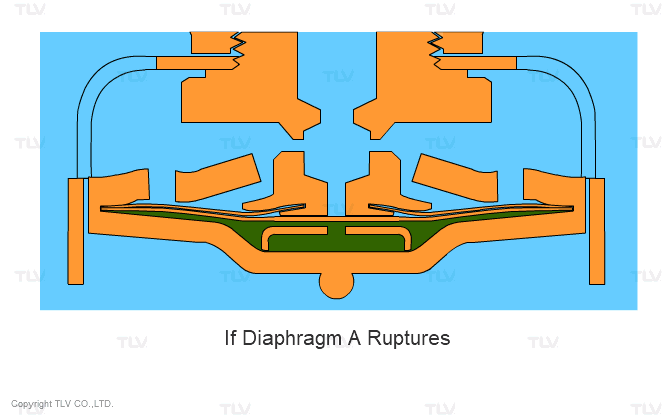
As long as the supply of steam continues, the valve is pushed up and remains fully open.
